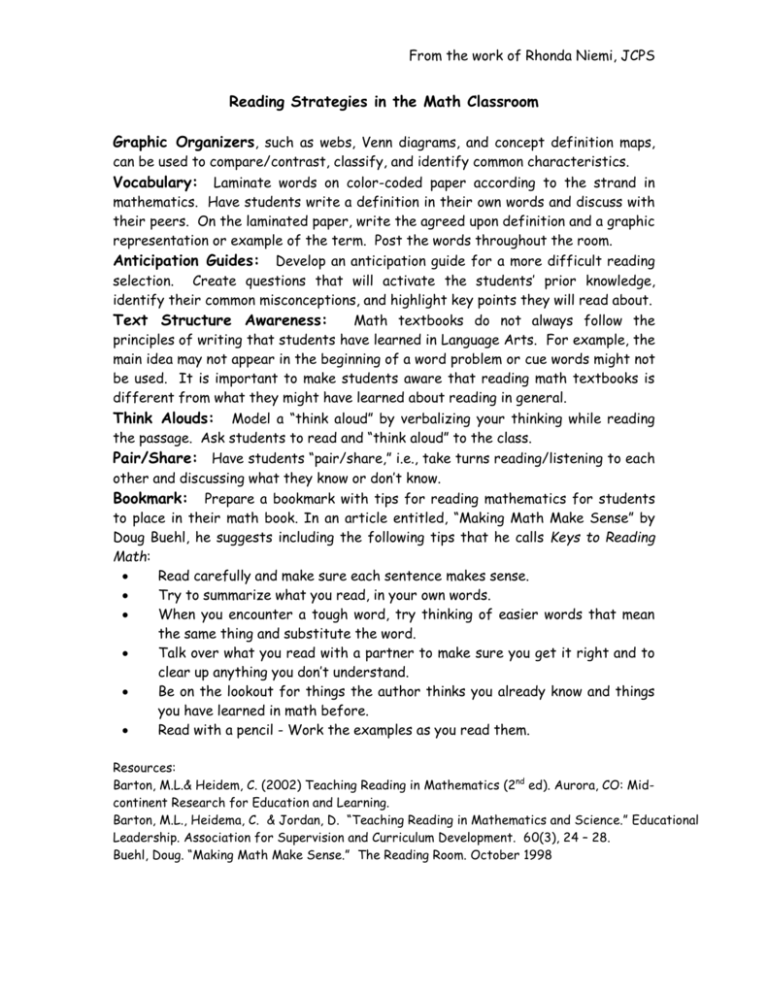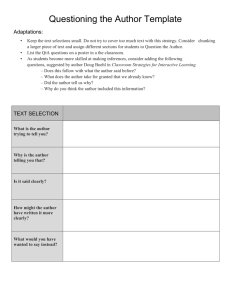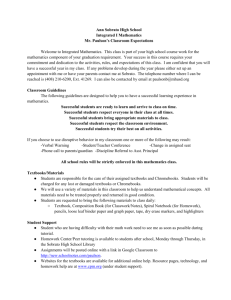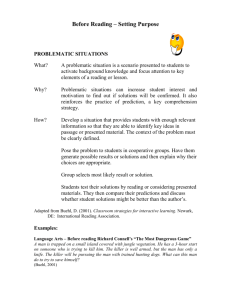Reading Strategies in the Math Classroom
advertisement

From the work of Rhonda Niemi, JCPS Reading Strategies in the Math Classroom Graphic Organizers, such as webs, Venn diagrams, and concept definition maps, can be used to compare/contrast, classify, and identify common characteristics. Vocabulary: Laminate words on color-coded paper according to the strand in mathematics. Have students write a definition in their own words and discuss with their peers. On the laminated paper, write the agreed upon definition and a graphic representation or example of the term. Post the words throughout the room. Anticipation Guides: Develop an anticipation guide for a more difficult reading selection. Create questions that will activate the students’ prior knowledge, identify their common misconceptions, and highlight key points they will read about. Text Structure Awareness: Math textbooks do not always follow the principles of writing that students have learned in Language Arts. For example, the main idea may not appear in the beginning of a word problem or cue words might not be used. It is important to make students aware that reading math textbooks is different from what they might have learned about reading in general. Think Alouds: Model a “think aloud” by verbalizing your thinking while reading the passage. Ask students to read and “think aloud” to the class. Pair/Share: Have students “pair/share,” i.e., take turns reading/listening to each other and discussing what they know or don’t know. Bookmark: Prepare a bookmark with tips for reading mathematics for students to place in their math book. In an article entitled, “Making Math Make Sense” by Doug Buehl, he suggests including the following tips that he calls Keys to Reading Math: Read carefully and make sure each sentence makes sense. Try to summarize what you read, in your own words. When you encounter a tough word, try thinking of easier words that mean the same thing and substitute the word. Talk over what you read with a partner to make sure you get it right and to clear up anything you don’t understand. Be on the lookout for things the author thinks you already know and things you have learned in math before. Read with a pencil - Work the examples as you read them. Resources: Barton, M.L.& Heidem, C. (2002) Teaching Reading in Mathematics (2nd ed). Aurora, CO: Midcontinent Research for Education and Learning. Barton, M.L., Heidema, C. & Jordan, D. “Teaching Reading in Mathematics and Science.” Educational Leadership. Association for Supervision and Curriculum Development. 60(3), 24 – 28. Buehl, Doug. “Making Math Make Sense.” The Reading Room. October 1998











